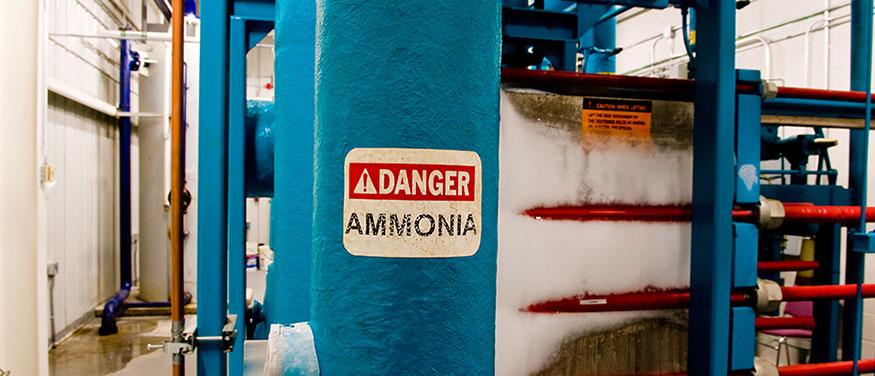
Industry uses for ammonia gas detectors/sensors include Cool/Cold Rooms, Wineries, Beverage/Bottling Plants, Chemical Manufacturing, Food Processing, Poultry/Fish/Meat Processing, Refrigeration Systems, Storage Freezers, Equipment/Plant Rooms, Power Plants, Gas Bottling Plants to name a few.
Ammonia (NH3) is a compound of nitrogen and hydrogen with the formula NH3. Ammonia is a caustic and hazardous gas in its concentrated form and is classified as a hazardous substance. According to Wikipedia, the global industrial production of ammonia in 2014 was 176 million tonnes, which was a 16% increase over the 2006 global industrial production of 152 million tonnes.
Ammonia for Commercial/Industrial uses is sold as ammonia liquor (usually 28% ammonia in water) or as pressurised or refrigerated anhydrous liquid ammonia transported in tank cars or cylinders. (Wikipedia) NH3 boils at −33.34 °C at a pressure of one atmosphere, so it is recommended that liquid ammonia is stored under pressure or at low temperatures.
If you are using ammonia as part of your refrigeration process, you can face up to several challenges in protecting your plant from the danger and expenses of ammonia leaks within cold storage, refrigerated process areas, and the engine rooms. Honeywell's Manning EC-FX-NH3 maintains sensitivity and accuracy — even with rapid changes in temperature and humidity.
How does ammonia act in the body?
When a body is exposed to ammonia as a result of breathing, swallowing, or skin contact, it reacts with water to produce ammonium hydroxide. This chemical is very corrosive and will damage cells in the body on contact.

